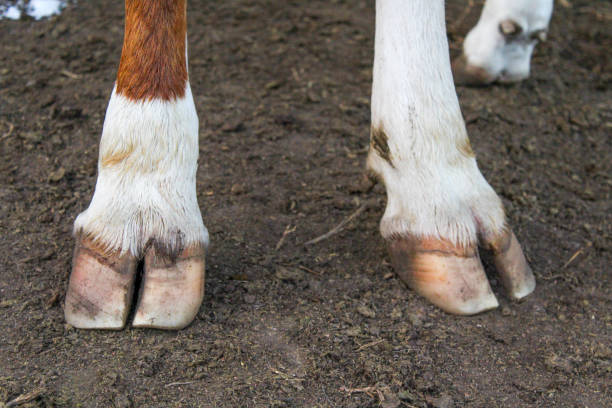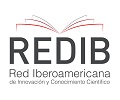Evaluación clínica y radiológica de pezuñas bovinas: un estudio post-mortem
DOI:
https://doi.org/10.14409/favecv.2025.1.e0043Palabras clave:
bovino, longitud de la pared dorsal, pezuña, ángulo de la pezuñaResumen
El objetivo de este estudio fue evaluar los hallazgos obtenidos del examen clínico, radiográfico y transversal de 36 pezuñas de ganado tomadas aleatoriamente del matadero. En el estudio se determinó que existían diferencias significativas en los rangos y frecuencias de distribución, aunque las medias eran normales al observar las características estructurales de los cascos (ángulo del casco, longitud de la pared dorsal, etc.). Además, el examen clínico de la base y el examen de la superficie transversal del casco según la radiografía del casco revelaron hallazgos diferentes. En conclusión, este estudio demostró que el cuidado de las pezuñas no es sólo un método de tratamiento para las enfermedades de las patas y las pezuñas, sino también un procedimiento de rutina en la cría de ganado.
Citas
Akın İ. 2008. The relationship between the histological quality of the newly formed hoof tissue and the levels of trace elements in blood serum and hoof tissues during the recovery period of some hoof diseases in dairy cows. PhD Thesis, Bursa, Turkey. Bursa Uludag University, Institute of Health Sciences.
Blowey RW. 2016. The veterinary book for dairy farmers. Ed. 5M Publishing, Sheffield. 330-341 pp.
Canatan U. 2020. Comparative investigation of the foot biomechanic with the morphological, radiological, pathological and sole load distribution results in cattle in province of bursa: A randomized ex-vivo study. PhD Thesis, Bursa, Turkey. Bursa Uludag University, Institute of Health Sciences.
Çeçen G. 2014. Lameness and foot diseases in cattle: diagnosis, treatment techniques and case atlas (1. edition). Sentez Publishing.
Greenough PR, Weaver AD, Brom DM, Esslemont RJ, Galindo FA. 1997. Basic concepts of bovine lameness. In: Greenough PR, Weaver AD (eds). Lameness in cattle (3rd ed.). Philadelphia: WB Saunders Company.
Keskin E. 2016. Observations on the incidence and treatment of foot diseases of cattle in Gaziantep region. Master's Thesis, Elazığ, Turkey. Firat University, Institute of Health Sciences.
Nuss K, Sauter-Louis C, Sigmund B. 2011. Measurements of forelimb claw dimensions in cows using a standardised sole thickness: A post-mortem study. Vet. J. 190: 84-89. DOI: 10.1016/j.tvjl.2010.10.002.
Özsoy S. 1990. Comparative studies on the etiology, pathogenesis and treatments of foot diseases in cultured cattle in Istanbul and its surroundings. PhD Thesis, Istanbul, Turkey. Istanbul University, Institute of Health Sciences.
Pasquini C, Spurgeon T, Pasquini S. 2003. Anotomy of domestic animals, systemic and regional approach (10th Edition). Sudz Publishing.
Pirci B. 2011. Examination of the cattle foot housed in the Kayseri/Develi agricultural milking farm and treatment of foot disorders. Master's Thesis, Kayseri, Turkey. Kayseri Erciyes University, Institute of Health Sciences.
Raven ET. 1987. Cattle foot care and claw trimming (1st ed.). Farming Press Books.
Sümbüloğlu K, Sümbüloğlu V. 2019. Biostatistics (19th ed.). Hatiboglu Publishing House.
Yavru N, Özkan K, Elma E. 1989. Ayak hastalıkları ve ortopedi. (1. baskı). SÜ Vet. Fak. Basım Ofset Matbaası.

Descargas
Publicado
Cómo citar
Número
Sección
Licencia
Derechos de autor 2025 Eren POLAT, Batuha CAN, Arda EYVAZ

Esta obra está bajo una licencia internacional Creative Commons Atribución-NoComercial-CompartirIgual 4.0.
FAVE Sección Ciencias Veterinarias ratifica el modelo Acceso Abierto en el que los contenidos de las publicaciones científicas se encuentran disponibles a texto completo libre y gratuito en Internet, sin embargos temporales, y cuyos costos de producción editorial no son transferidos a los autores. Esta política propone quebrar las barreras económicas que generan inequidades tanto en el acceso a la información, como en la publicación de resultados de investigaciones.
Los artículos de la revista son publicados en http://bibliotecavirtual.unl.edu.ar/publicaciones/index.php/FAVEveterinaria/issue/current/, en acceso abierto bajo licencia Creative CommonsAtribución-NoComercial-Compartir Igual 4.0 Internacional.











